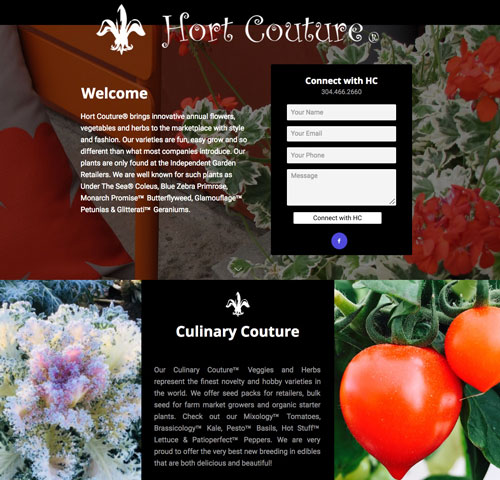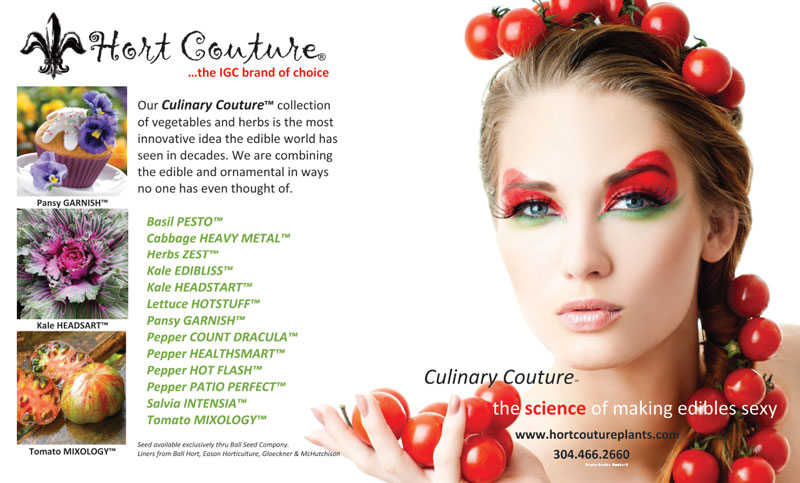7/1/2018
Consistent, Cohesive & Focused
Katie Elzer-Peters
Experts in marketing, advertising and public relations (PR) all agree on one thing: these concepts are easy to implement, but difficult to measure.
“Attempts to measure the effectiveness of an ad are usually counter-productive,” says Sid Raisch, president of Horticultural Advantage. Katie Dubow, creative director for the Garden Media Group, agrees. “The hardest part of our business is measuring the direct worth of PR,” she says. “You can’t directly tie PR to sales.”
Despite its murky ROI, you still have to engage in marketing, advertising and PR. It can take between 15 to 30 touch points (the number used to be seven) before someone new will buy and you have to initiate that contact if you want to eventually make the sale.
Whether via an Instagram post, a print advertisement, a digital banner ad, mentions in a magazine or on a popular lifestyle blog, through email marketing or radio ads—somehow you have to reach your customers, over and over and over again.
“People ask me, ‘Which do you find to be better: print or digital?’” says Kim Brown, advertising account manager for Ball Publishing. “I say, ‘Both!’ When TV came along, radio didn’t go away. The audience keeps getting more fragmented. You need to be in more places. It isn’t bad to have potential customers see something in print and in a newsletter—in multiple ways.”
It takes a lot of time and money to constantly reach out to consumers, so it’s important to maximize the impact of the efforts.
“Consistency is King”
Sid is the one who says, “Consistency is king,” while Kim says, “Be cohesive.” Katie said to make sure everything you do works toward the main business goal. Alec Charais, marketing and communications manager for Bailey Nurseries, mentions over and over again the importance of identifying the key message you’re communicating. All four are right on target.
It’s easier to advertise with the person who calls you the most and to click “boost” on a Facebook post, but it’s much more effective (and will create synergy and results greater than the sum of the individual activities) to be:
• Consistent
• Cohesive
• Focused on the business goal
First—Do Some Planning
Achieving all of this is easier said than done. You don’t have to make a big promotional calendar matrix and stick with it. Instead focus on doing these three things:
• Identify your ideal and/or actual customers
• Write out your main business goal for the season or the month
• Review and check in to stay focused
Is there a market segment you might have overlooked because you’re not on the floor? Maybe your offerings draw in specific niche customers, but your communications aren’t aimed at those customers.
Once the customer and brand voice are identified, it’s time to flesh out your key message. Is it “Decorating with plants?” How about, “A flavor-packed summer?”
Sid says, “Make sure that message is spot on — not all about discounts, coupons or low prices. Imagine prospective customers wearing signs on their foreheads that say, ‘Inspire Me!’ The message is about why THEY would want what you have.”
“Having a clearly stated key message makes it easier when you’re trying to decide how to execute. If you don’t have that key message in mind, everything can fall apart really fast,” says Alec. “It is so easy to get off that message, without even intending to, weaving way through the decision-making process for ads, social, in-store promotions.”
That’s why it’s important to write it out, communicate it to the team and check in.


Speed Bumps to Smooth Out
Even with the best planning there are common places where the funnel of prospects to leads to sales gets stopped up because of a breakdown in consistency, cohesiveness and/or focus toward the business goal. Today, audit just one of these areas and fix the breakdown. Keep chipping away until everything is running smoothly. (One can dream!)
Pictured: Hort Couture maintains continuity between print advertising and web presence by ensuring what they're promoting is front and center on the home page.
Marketing and Website Visits: Check your ad creative/social marketing against what’s displaying on the website. When the product advertised (via print, radio, social media or email marketing) is nowhere to be found on the website, suddenly there’s an immediate dead end. Somebody was interested and then they’re gone.
Collect emails. “In today’s market, you have to have a way to do this,” Katie says. If you don’t have that set up, once again, you’ve created a dead end. The interested party might come to your store, but they might not, especially if this is only the first or second time they’ve come into contact with you. Those emails will allow you to stay in touch with interested customers and eventually convert them.
Eliminating Disconnects Between Marketing and Store Visits: Sid says, “Advertising a ‘bad’ business puts it in further distress because people who come to see and are disappointed are very unlikely to try again, which makes advertising progressively less effective. So clean up the act first.”
Look over your email marketing and make sure there’s a call to action (CTA). Invite people to come in, learn more (click to website), share photos—anything to keep them involved and keep communication going.
Deliver an in-store experience that matches expectations created from advertising and brand positioning. Are you seen as being high end, down home, laid back, a place for specialty plants, trendy or classic? If your website screams “Magnolia Silos” and your store looks like the local 7-Eleven, there’s a disconnect. One isn’t necessarily better than the other, but the marketing has to match the experience.
Put your best foot forward. “If you’re questioning advertising results, begin with a ‘makeover.’ Start by eliminating as many distasteful appearances as possible, including frowny people,” Sid says. “Replace with smiles, fresh curb appeal landscaping and paint. Remove all merchandise that nobody has bought in the past year. Remove anything that nobody would choose because there are other better choices of the same item available.
“I often refer to the ‘Sid Cart,’ which is a cart that you take through the store every day and place the worst-looking plant from each item you sell on it and move it out of the store. If you do this every day eventually all the crap will be gone and what's left is what will sell. The crappy-looking stuff doesn't sell and you have to pay to take care of it. Worse yet, it makes the good stuff look unattractive.”
Simply Put—Everything Has to Work Together: The website, the print ads, the radio ads, the in-store displays, the social media, the customer service—it all needs to present a consistent, cohesive, focused experience leading toward one thing: money in the register. GP
Katie Elzer-Peters is a garden writer and owner of The Garden of Words, LLC, a marketing and PR firm handling mostly green-industry clients. Contact her at Katie@thegardenofwords.com or at www.thegardenofwords.com.